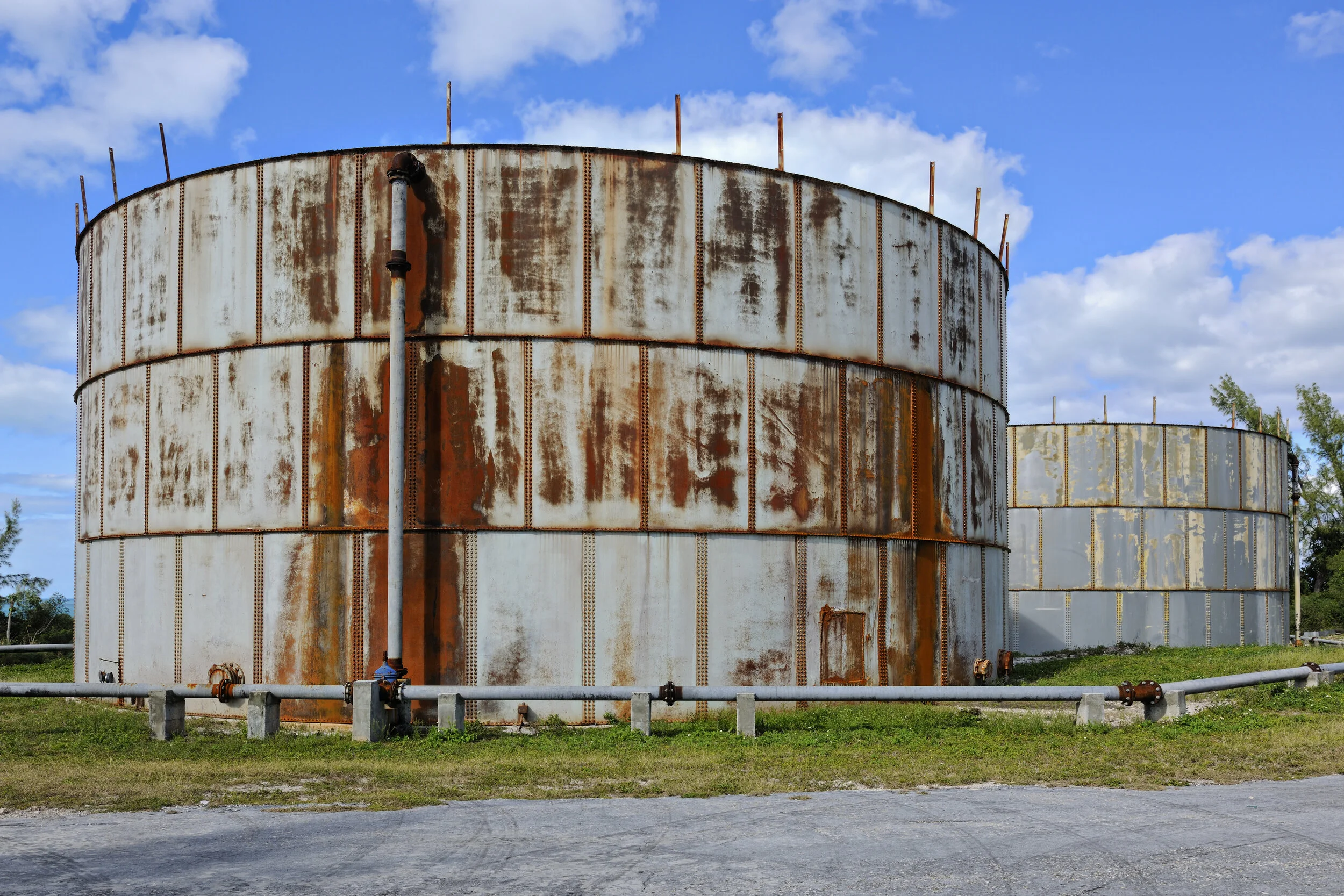Pressure Vessel Design & Analysis
At Hedderman Consulting we provide a variety of services related to the pressure vessel industry. This includes:
Designing pressure vessels in accordance with Section VIII, Division 1 of the ASME Boiler & Pressure Vessel Code
Analyzing and evaluating pressure vessels in accordance with Section VIII, Division 1, Appendix 46, and Section VIII, Division 2
Conducting third-party (independent) reviews of pressure vessel designs and analyses
Performing Fitness-for-Services Evaluations in accordance with API 579-1/ASME FFS-1
We meet the qualification requirements of Certifying Engineer per the ASME Boiler & Pressure Vessel Code, Section VIII, Division 1, Mandatory Appendix 47.
ASME Section VIII, Division 1 (design by rule)
We have decades of experience designing a wide variety of pressure vessels in accordance with Section VIII, Division 1 of the ASME Boiler & Pressure Vessel Code. This includes chemical reactors, accumulator tanks, autoclaves, chemical adsorption vessels, heat exchangers, and cryogenic vacuum chambers to name a few. We use design software such as PV Elite and Compress to ensure your pressure vessel meets the requirements of the ASME Code. For those projects where the pressure vessel is subjected to complex loads such as thermal shock or cyclic loading (fatigue), we use Finite Element Analysis (FEA) in accordance with Section VIII, Division 1, Mandatory Appendix 46.
ASME Section VIII, Division 2 (design by analysis)
When the geometry or loading of a pressure vessel is such that traditional methods of evaluation (Design by Rule) are insufficient to demonstrate Code compliance, a more rigorous analysis method is required. Whether it’s a Division 1 pressure vessel being designed using Appendix 46, or a Division 2 pressure vessel, we can help. At Hedderman Consulting we provide finite element analysis services to demonstrate your pressure vessel meets the applicable section of the ASME Code.
We can analyze and evaluate your pressure vessel or equipment using the appropriate type of finite element analysis. We have decades of experience performing a wide variety of analyses using FEA including:
elastic analyses
elastic-plastic analyses
limit load analyses
thermal transient analyses
buckling evaluations
fatigue evaluations
vibration analyses
response spectrum analyses
Third Party (Independent) Reviews
At Hedderman Consulting we conduct third party reviews of other companies’ pressure vessel design and analysis work. Having designed and analyzed pressure vessels for over 30 years, we have the knowledge and experience to provide our customers with thorough independent reviews to ensure the original work was done correctly and meets the ASME Code.
What can you expect from a third party review? See our blog post here for details.
Fitness-for-Service Evaluations (api 579-1/asme ffs-1)
If the structural integrity of your pressure vessel or storage tank is suspect due to corrosion, dents, gouges, or other issues, we can help. With a Fitness-for-Service evaluation performed in accordance with API 579-1/ASME FFS-1, we will provide you with the information necessary to make decisions on whether or not you can can continue to operate your equipment as-is, or if it requires repair or replacement.
Need more information on fitness-for-service evaluations? See our blog post here for details.
Projects
The following are a few examples of recent pressure vessel projects we’ve completed:
Elastic Stress and Limit Load Analyses of a Pressure Vessel
An ASME pressure vessel with large-sized nozzles and significant external nozzle loads was evaluated using finite element analysis (FEA). FEA was used since evaluation of the connection of the nozzles to the vessel were outside the limits of applicability of WRC 107. Elastic stress analyses showed stresses exceeded the ASME Code allowable stress limits. Since materials had already been ordered, the fabricator wished to avoid design modifications if possible. Limit load analyses were therefore performed in accordance with the ASME Boiler & Pressure Vessel Code, Section VIII, Division 2. The results of the limit load analyses showed the design of the pressure vessel to be acceptable.
fatigue assessment of a Mixing Tank
A process tank with a segmented removable upper head was evaluated for operating conditions including cyclic loads from a mixer attached to the top of the tank. The evaluation included performing design calculations in accordance with Section VIII, Division 1, performing a finite element stress analysis for cyclic loads, and conducting a subsequent fatigue evaluation. The results of the evaluation showed the initial design did not meet the desired fatigue design life. Recommendations were made and subsequent analyses showed the tank with the proposed design modifications would meet the ASME Code and desired fatigue life.
static shock analysis of a heat exchanger
A ship-board heat exchanger was analyzed for static shock loading using finite element analysis. All of the components (shell, heads, nozzles, tubesheets, tubes, baffles, etc.) were modeled and evaluated for structural integrity. Hydrodynamic effects of contained fluids were considered in the analyses. A detailed and thorough evaluation of all of the components showed the stresses met the acceptance criteria.
Finite Element Analysis and Fatigue assessment of a Rectangular Pressure Vessel
Inspection of a relatively new rectangular pressure vessel subjected to routine deflagration loading discovered cracking in components of the quick-acting closures. A finite element analysis and fatigue evaluation of the vessel was performed as part of a failure investigation. The pressure vessel was analyzed for cyclic loading (fatigue) in accordance with Section VIII, Division 2 of the ASME Boiler & Pressure Vessel Code. The results of the evaluation showed the design met the ASME Code. Further investigation revealed the source of the cracking to be a metallurgical issue resulting from improper fabrication.
Determination of Allowable Nozzle Loads on Equipment Skids
Equipment skids containing pressure vessels, pumps, piping, and other equipment were analyzed to determine the maximum permissible loads that could be applied at the connections of the skids where they attached to the LNG plant’s piping system. The skids were evaluated for wind, seismic, and pressure loading using finite element analysis. Based on the available margin in the design, maximum permissible loads at the connections at the extents of the skids were determined.
Blog
The following are some of our blog posts related to pressure vessels. For a complete listing of our blog posts see our Blog Page here.
class 1 vs class 2 pressure vessels
Several years ago, Section VIII, Division 2 of the ASME Boiler & Pressure Vessel Code started classifying Division 2 pressure vessels as either Class 1 or Class 2. The differences in the requirements and design basis between these two classes are not provided in a single location in Section VIII, Division 2 but rather spread out across the Code. This article presents a compilation of the differences between these two classifications. (Read the post here)
an overview of section viii, division 1, appendix 46
Division 1 of Section VIII of the ASME Boiler & Pressure Vessel Code does not contain rules to cover all details of design and construction of pressure vessels. Where design rules do not exist, U-2(g) permits several courses of action, one of which is to use Mandatory Appendix 46. Appendix 46 provides the requirements for using Section VIII, Division 2 (Alternate Rules) in the design of Division 1 pressure vessels. This article provides a general overview of Appendix 46 from the ASME Boiler & Pressure Vessel Code. (Read the post here)
ASME B&PV Code protection against local failure: what is it and why is it important?
Imagining how a pressure vessel can fail due to excessive plastic deformation (plastic collapse), buckling, or fatigue is not too difficult. But what does the ASME Code mean by local failure? What exactly is the failure mechanism being considered in evaluating a component for local failure and why is it important? (Read the post here)
ASME B&PV Code design by analysis - when can it be used?
When is the use of Design by Analysis methods, such as finite element analysis, permitted by the ASME Code in pressure vessel design? And what are the limitations imposed by the Code on its use? (Read the post here)
finite element analysis of pressure vessels
If you are unfamiliar with the basic steps involved in finite element analysis with respect to pressure vessels this article should help. (Read the post here)
Other Services We Provide
To learn more about the other services we provide click on the links below




